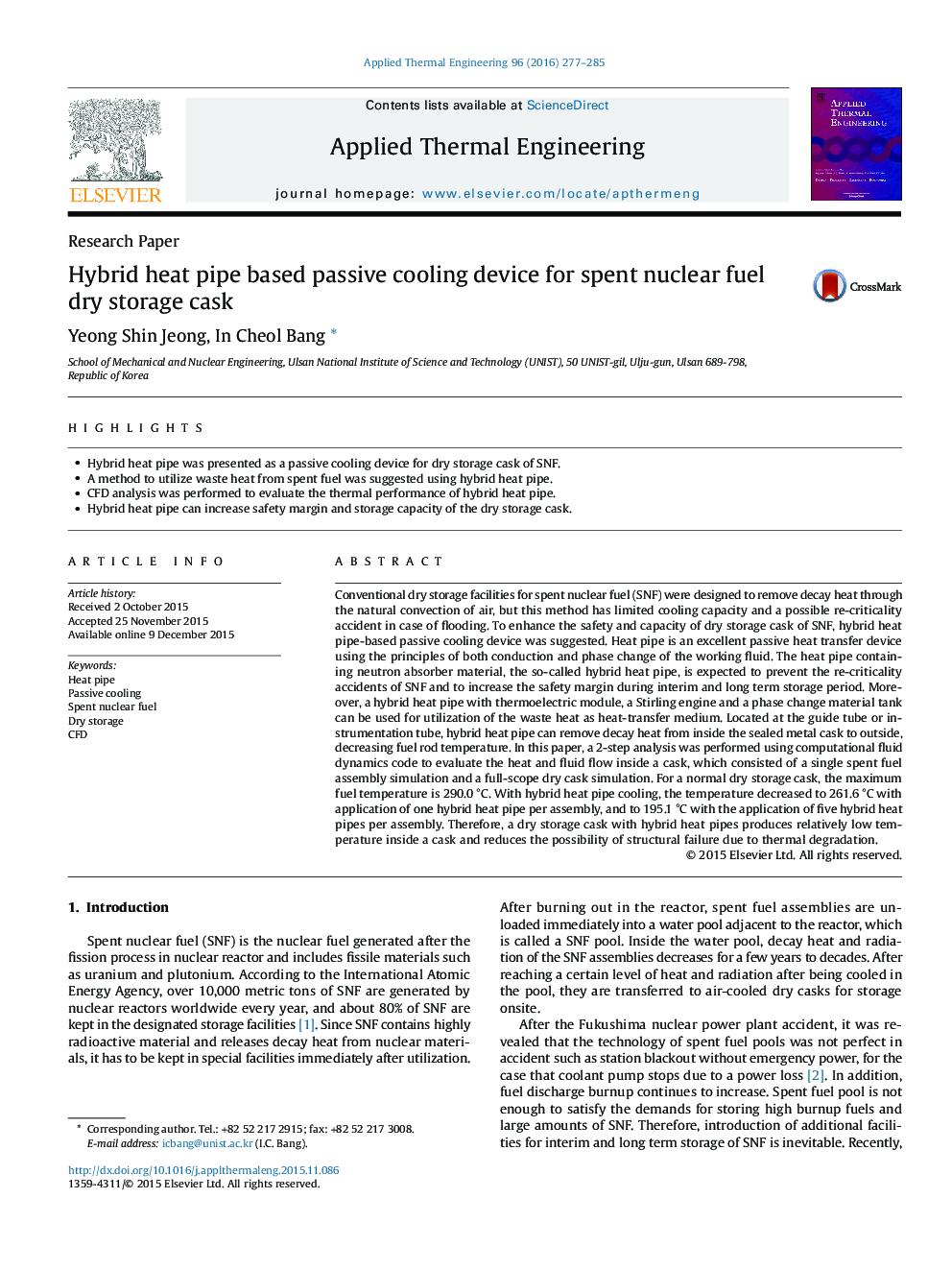| کد مقاله | کد نشریه | سال انتشار | مقاله انگلیسی | نسخه تمام متن |
|---|---|---|---|---|
| 644969 | 1457132 | 2016 | 9 صفحه PDF | دانلود رایگان |
عنوان انگلیسی مقاله ISI
Hybrid heat pipe based passive cooling device for spent nuclear fuel dry storage cask
ترجمه فارسی عنوان
دستگاه خنک کننده منفذ بر پایه گرما ترکیبی برای مخزن خشک مخزن سوخت هسته ای
دانلود مقاله + سفارش ترجمه
دانلود مقاله ISI انگلیسی
رایگان برای ایرانیان
کلمات کلیدی
موضوعات مرتبط
مهندسی و علوم پایه
مهندسی شیمی
جریان سیال و فرایندهای انتقال
چکیده انگلیسی
Conventional dry storage facilities for spent nuclear fuel (SNF) were designed to remove decay heat through the natural convection of air, but this method has limited cooling capacity and a possible re-criticality accident in case of flooding. To enhance the safety and capacity of dry storage cask of SNF, hybrid heat pipe-based passive cooling device was suggested. Heat pipe is an excellent passive heat transfer device using the principles of both conduction and phase change of the working fluid. The heat pipe containing neutron absorber material, the so-called hybrid heat pipe, is expected to prevent the re-criticality accidents of SNF and to increase the safety margin during interim and long term storage period. Moreover, a hybrid heat pipe with thermoelectric module, a Stirling engine and a phase change material tank can be used for utilization of the waste heat as heat-transfer medium. Located at the guide tube or instrumentation tube, hybrid heat pipe can remove decay heat from inside the sealed metal cask to outside, decreasing fuel rod temperature. In this paper, a 2-step analysis was performed using computational fluid dynamics code to evaluate the heat and fluid flow inside a cask, which consisted of a single spent fuel assembly simulation and a full-scope dry cask simulation. For a normal dry storage cask, the maximum fuel temperature is 290.0â°C. With hybrid heat pipe cooling, the temperature decreased to 261.6â°C with application of one hybrid heat pipe per assembly, and to 195.1â°C with the application of five hybrid heat pipes per assembly. Therefore, a dry storage cask with hybrid heat pipes produces relatively low temperature inside a cask and reduces the possibility of structural failure due to thermal degradation.
ناشر
Database: Elsevier - ScienceDirect (ساینس دایرکت)
Journal: Applied Thermal Engineering - Volume 96, 5 March 2016, Pages 277-285
Journal: Applied Thermal Engineering - Volume 96, 5 March 2016, Pages 277-285
نویسندگان
Yeong Shin Jeong, In Cheol Bang,
